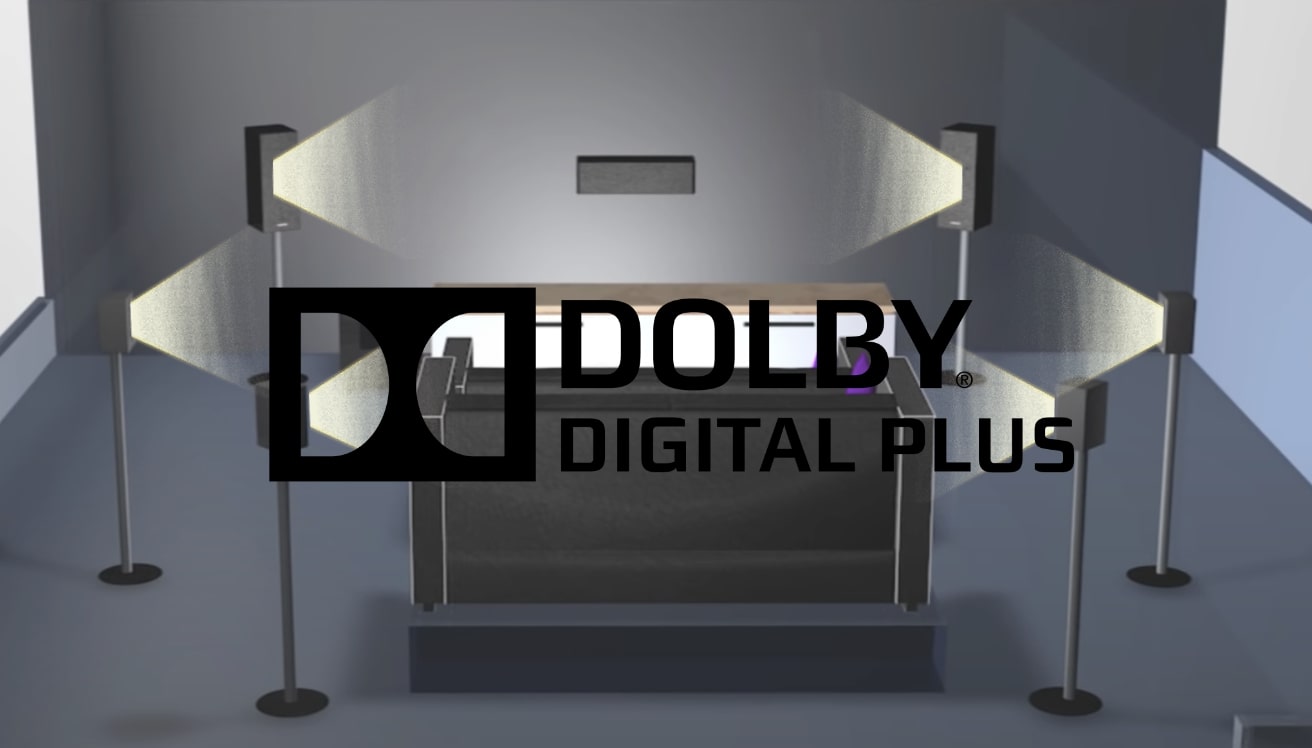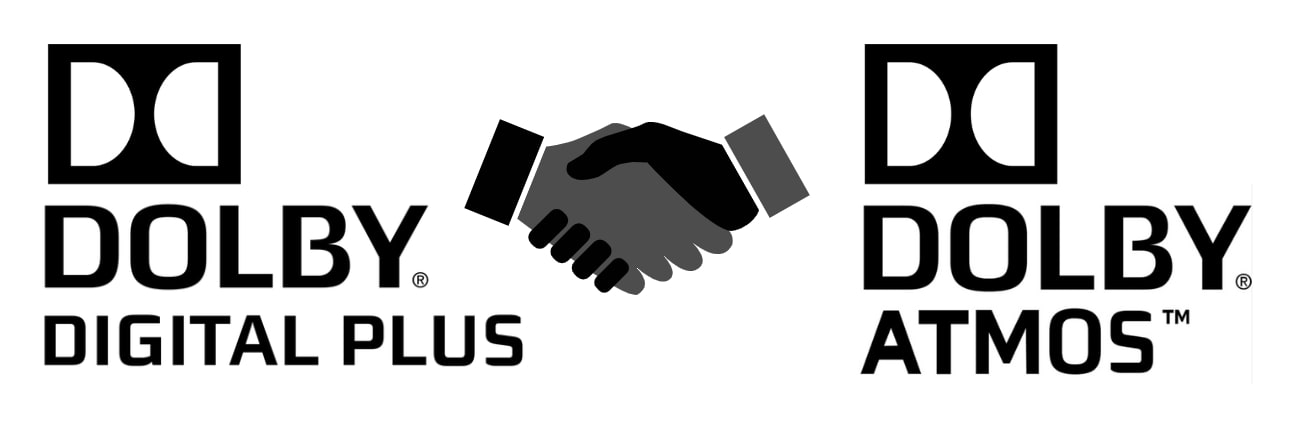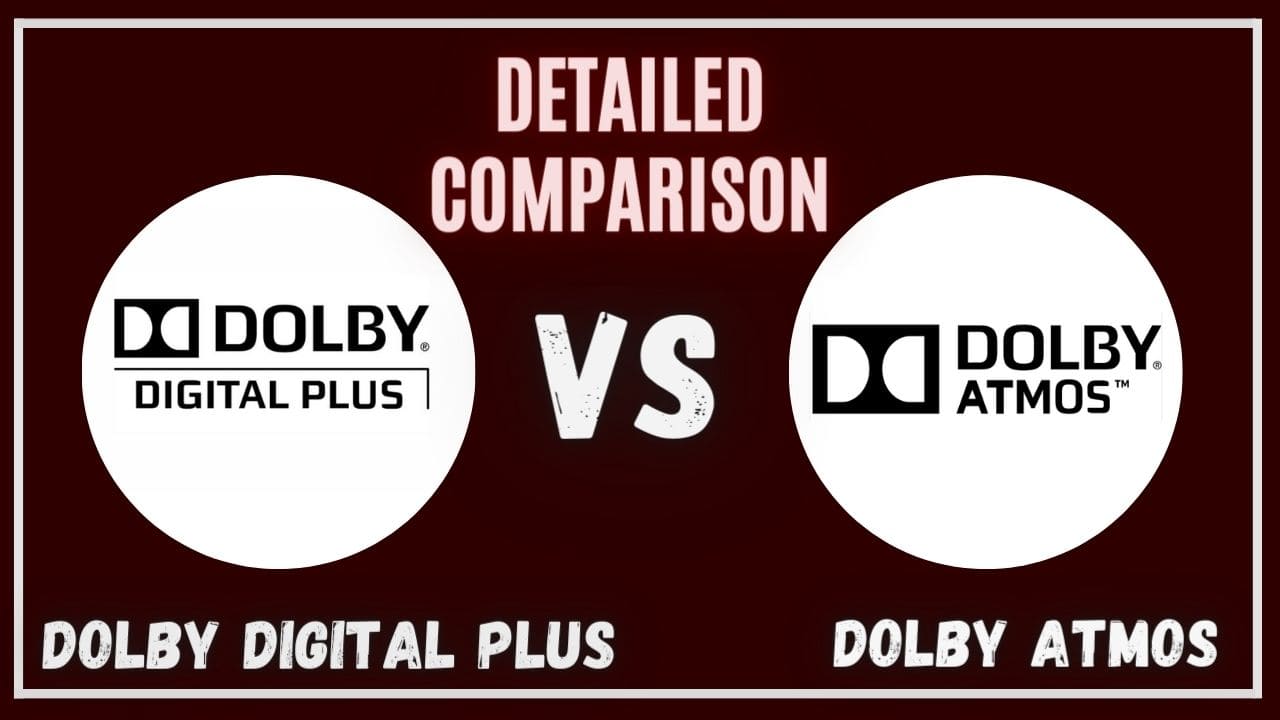This Post may contain affiliate links, when you purchase through links on our site, we may earn an affiliate commission at no extra cost to you. Here’s how it works.
In the dynamic world of audio technology, Dolby Laboratories has remained a prominent figure, pioneering sound formats that enhance our listening experience.
Table of Contents
ToggleTwo of their most acclaimed innovations, Dolby Digital Plus and Dolby Atmos stand out in this regard.
While both technologies, Dolby Digital Plus vs Dolby Atmos, strive to envelop the listener in a more immersive sound environment, they differ significantly in approach and capabilities.
Dolby Digital Plus: An Evolution of Sound
Dolby Digital Plus, also known as Enhanced AC-3 (E-AC-3), is an advanced successor to the traditional Dolby Digital (AC-3) format.
It offers several improvements, including increased audio channels for up to 7.1 surround sound, and better data compression, and is considered a more efficient and flexible audio codec.

This means that it can deliver higher quality sound at lower bitrates, making it ideal for streaming services, Blu-ray discs, and broadcast TV, where bandwidth may be limited but the demand for high-quality audio is high.
Dolby Digital Plus has been engineered to be backward compatible with existing Dolby Digital receivers, ensuring that content encoded in this newer format can still be enjoyed on older equipment, albeit without taking advantage of the enhanced features.
Dolby Digital Plus vs Dolby Atmos
When we compare Dolby Digital Plus and Dolby Atmos side by side, the primary difference lies in their approach to sound delivery.
Dolby Digital Plus focuses on delivering high-quality surround sound through efficient compression, supporting up to 7.1 audio channels.
On the other hand, Dolby Atmos breaks the traditional channel-based approach and introduces an object-based system that includes height information, creating a three-dimensional soundscape.
Now let us take this comparison on behalf of the following-
Support Across Platforms:
Dolby Digital Plus is widely supported across various platforms, including streaming services, Blu-ray discs, and broadcast television.
Its efficiency and compatibility with older Dolby Digital systems make it a versatile choice for content providers and consumers alike.
Dolby Atmos, while initially available in premium cinemas, has rapidly expanded its reach to home theaters, streaming services, and even mobile devices.
Its adoption requires more specific hardware support but is increasingly featured in high-end entertainment systems and platforms aiming for the highest quality audio experience.
Speaker Configuration:
Dolby Digital Plus operates within the traditional surround sound configurations up to 7.1 channels, providing flexibility without the necessity for specialized equipment.
Dolby Atmos, however, introduces a significant innovation with its object-based audio, requiring additional speakers to create the height dimension of its immersive soundstage.
An Atmos setup can range from a 5.1.2 system (five traditional surround speakers, one subwoofer, and two overhead speakers) to even more elaborate configurations for the full effect.
Sound System Compatibility:
Sound system compatibility is where Dolby Digital Plus shines due to its backward compatibility with the extensive existing infrastructure of Dolby Digital.
It’s easily integrated into most current home entertainment systems without requiring new equipment.
Conversely, Dolby Atmos demands a compatible receiver and additional speakers to unlock its full potential, representing a higher investment in audio equipment.
However, many soundbars and home theater systems now integrate Atmos capabilities, making it more accessible to average consumers.
Sound Quality:
In terms of sound quality, Dolby Digital Plus offers a significant improvement over its predecessor, delivering clearer, more detailed sound within its channel-based system.
It’s particularly effective at ensuring that audio quality is maintained even at lower bitrates, which is essential for streaming content.
Dolby Atmos takes sound quality to another dimension, literally. By adding height to the audio landscape and treating sounds as individual objects, Atmos achieves a level of immersion and realism that traditional surround sound systems can’t match.
The clarity, depth, and enveloping nature of Atmos soundtracks create a more visceral and engaging experience, especially in content specifically mixed to take advantage of its capabilities.
Does Dolby Digital Plus Support Atmos?
One of the most common questions around these technologies is whether Dolby Digital Plus supports Dolby Atmos.
The answer is a resounding yes. Dolby Digital Plus can carry Dolby Atmos data.

This integration means that streaming services can deliver Atmos experiences using the existing Dolby Digital Plus infrastructure, ensuring compatibility and ease of access for consumers.
When Atmos content is played back on a system that supports it, the Atmos data is decoded to deliver the full, object-based audio experience.
If the system does not support Atmos, the audio will default to the standard 5.1 or 7.1 surround sound provided by Dolby Digital Plus, ensuring that users still enjoy a high-quality audio experience.
This compatibility has been crucial in the widespread adoption of Dolby Atmos, as it allows content creators and distributors to use a single, efficient codec to deliver both conventional surround sound and immersive Atmos experiences without the need for separate tracks or formats.
Cost and Accessibility Aspects of Dolby Digital Plus and Dolby Atmos
- Hardware Costs:
- Dolby Digital Plus: Widely available and more affordable due to its widespread adoption in mainstream entertainment devices.
- Dolby Atmos: Generally more expensive due to specific hardware requirements for supporting its immersive audio technology.
- Content Accessibility:
- Dolby Digital Plus: Widely available across various media formats and streaming services at no extra cost.
- Dolby Atmos: Content availability is growing but may come at a premium on certain platforms and require compatible hardware.
- Overall Accessibility and Adoption:
- Dolby Digital Plus: More accessible to average consumers due to its prevalence in mainstream entertainment products.
- Dolby Atmos: Adoption may be slower due to higher costs and limited content availability but is expanding as technology matures.
- Cost-Benefit Considerations:
- Dolby Digital Plus: Offers enhanced sound at an affordable price point, suitable for most consumers.
- Dolby Atmos: Provides a premium audio experience for enthusiasts willing to invest in compatible hardware and content.
Conclusion:
In conclusion, the comparison between Dolby Digital Plus and Dolby Atmos highlights their distinct features and applications.
However, their coexistence and compatibility represent a significant stride in our journey towards truly immersive audio experiences.
Whether you’re watching a movie at home, streaming a concert, or playing a video game, these Dolby technologies, Dolby Digital Plus vs Dolby Atmos, work in tandem to transport you into the heart of the action like never before.
